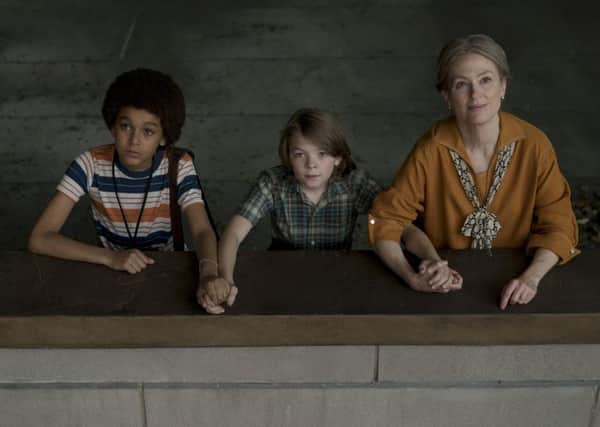Interview: Director Todd Haynes on making children's film Wonderstruck


Haynes, best known these days for Carol and Far From Heaven, is reminiscing about his childhood viewing habits because he’s just made his first kids’ film, Wonderstruck, a narratively ambitious, interlinked tale about two deaf kids running wild in New York 50 years apart. Based on the acclaimed novel by The Invention of Hugo Cabret author Brian Selznick, it’s precisely the sort of film that might make the younger members of its audience similarly crazy and obsessed with film, steeped as it is in movie history. Indeed, the way it blends a 1920s-set black-and-white silent movie with a grittier 1970s urban coming-of-age drama makes it feel like the sort of gateway movie that might open younger viewers up to a bigger world of weirder and more interesting art, much like Haynes’s pseudo Bowie biopic Velvet Goldmine did with older teens. “That was definitely part of my wanting to do it,” says Haynes. “I wanted to give kids something that not only had the beautiful craftsmanship and thematic sophistication its concept offered me as a director, but something that was utterly weird and unlike other kids’ movies.”
The film is certainly that. The 1977 story revolves around an orphan called Ben (newcomer Oakes Fegley) who runs away from home after losing his hearing in a freak accident. Determined to find out what happened to the father he never knew, he winds up in New York, alone and broke. In the parallel 1927 story, a young deaf girl called Rose (played by deaf actress Millicent Simmonds) runs away to New York to track down her silent film star mother (played by frequent Haynes collaborator Julianne Moore) only to discover that she’s less than thrilled to see her daughter. Though parents mindful of what they take their kids to see can rest assured it’s not a tragic story, capturing as it does a somewhat magical, kid’s eye view of New York at two fascinating periods in its history, it does offer an admirably unsentimental portrait of childhood resilience. “They certainly have a doggedness,” agrees Haynes. “They’re not little flowers.”
Advertisement
Hide AdThe casting of Simmonds as Rose, who is already deaf as the film opens, is key to the film’s success. Haynes wanted to cast a deaf actress for all the obvious reasons and his casting director found Millicent just outside Salt Lake City. She hadn’t done any acting before, but Haynes loved the audition she filmed on her phone. “You could just see it in her body and her gestures. She was this self-possessed kid with a really lovely quality. And Julianne loved her. She was so taken with her intuitive sense of the camera. She’s a natural as they say.”
The idea of parallel stories with deaf protagonists came from Selznick, who was finishing The Invention of Hugo Cabret when he decided he wanted to do another doorstopper-of-a-novel mixing prose and pictures (Wonderstruck runs to 600-plus pages, about half of them illustrated). “Hugo tells a single story with words and pictures,” says the author, picking up the story, “so I thought, ‘What if I tell two separate stories, one with words and one from a different time period in pictures?’ And it was research into the deaf community and the deaf experience that made me realise it might be interesting to tell the story of a deaf person visually, because that’s how they see the world.”
As part of his research into the early history of cinema that he conducted for Hugo, he’d already discovered that a lot of deaf people were cast in silent films. When he came to write the screenplay for Wonderstruck (which is the first screenplay he’s written) he had the idea of doing the 1920s section as an actual silent film so audiences could experience it from Rose’s point of view. For Ben’s story, though, he wanted to use the cinematic language of the great 1970s movies of the time. “I was thinking I was writing Mean Streets for children,” laughs Selznick, who admits he was a late convert to Scorsese’s breakthrough film, only forcing himself to watch it – he doesn’t generally like violent movies – when he found out Scorsese was going to direct Hugo.
Haynes, on the other hand, couldn’t help but look back to The French Connection for the 1970s and used the excuse of Rose’s story to do a deep-dive on the history of silent cinema, particularly the work of King Vidor and FW Murnau. “It was just infinite, juicy research,” says Haynes.
Still, perhaps trumping even these joys is the fact that after being denied permission to use any Bowie songs on Velvet Goldmine he managed to get Space Oddity on the soundtrack of Wonderstruck.
“I know,” he says, “I finally got a Bowie song in a movie of mine!” n
Wonderstruck is in cinemas from 6 April